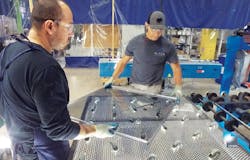RavenWindow Gen3 Thermochromic Smart Windows
Chromogenic glass becomes tinted in response to heat or light. In windows, this can lead to at least a 10 percent reduction in annual HVAC electricity use compared with low-E windows, according to the U.S. General Services Administration. However, because most chromogenic windows are electrochromic (that is, they use an electric field to engage the tint, which is expensive), the technology remains a luxury item.
That fact was a major catalyst in the development of RavenWindow’s new Gen3 thermochromic windows, which are heat-activated … and affordable.
The Gen3 model can’t be tinted on demanded like its electrochromic counterparts—something that undoubtedly has its advantages—but it does offer the key benefits of chromogenic windows. Activated when the exterior glass reaches a certain “transition temperature point,” the tint reaches full effect in a matter of minutes. Once engaged, RavenWindow’s patented nanotechnology works together with a low-E coating on the window’s interior glass to minimize solar heat gain, glare, and UV degradation, while reducing the reliance on mechanical systems.
In colder months, when solar heat is more welcome, the windows’ thermochromic filter remains inactive during peak sunlight hours, allowing in more sunlight and further reducing HVAC electricity use.
RavenWindow claims that through using Gen3 glass, homeowners can reduce utility bills by as much as 30 percent.
